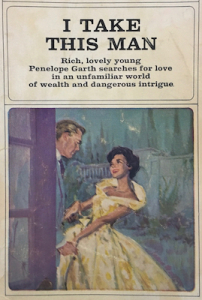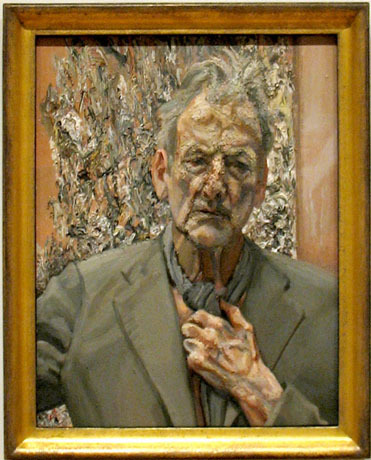
Ken Russell’s 1988 film adaptation of the 1911 Bram Stoker novel The Lair of the White Worm is often criticized for being an adaptation in name only. Critical consensus is that Russell’s The Lair of the White Worm maintains only minor details of Stoker’s original premise and the most the two works share is a common title. It’s true that Russell’s adaptation strays much further from its source material than 1922’s Nosferatu does in its faithful, but copyright-infringing bastardization of Stoker’s Dracula novel. The film The Lair of the White Worm is not a blasphemous, in-name-only adulteration of a sacred text, however. Bram Stoker’s White Worm novel is incoherent pulp. It’s a tawdry mess of a work written late in the author’s life, long past when his mental facilities were at their sharpest. Russell modernized and drastically altered basic components of the late author’s work, but he was much more faithful to the source material than what’s typically acknowledged. There’s even a prideful title card that proclaims, “Screenplay by Ken Russell from the Bram Stoker novel” to boastfully acknowledge their posthumous collaboration. Russell did not disrespectfully diminish a well-loved literary work. The filmmaker streamlined and enhanced an imperfect, misshapen novel that had been largely (and perhaps rightfully) forgotten by time by accentuating its most worthwhile aspects. He transformed a painfully slow read into a wildly fun horror film.
Although Stoker’s The Lair of the White Worm is a mid-length novella, it reads like a rambling epic that drones on for thousands of pages. Its story is essentially a simplistic rehashing of Dracula, in which a naïve outsider intrudes on a world of supernatural menace while conducting entirely unrelated, mundane business. Instead of providing legal service for suspiciously inhuman royalty like the solicitor Jonathan Harker in Dracula, The Lair of the White Worm’s naïve outsider, Adam Salton, is thrust into contact with similarly inhuman gentry by neighborly proximity. During a routine getting to know the attractive neighbors visit, Salton finds two wicked figures tormenting the innocent women of the house. One of these figures, Sir Caswall, is a weak carbon copy of Count Dracula. Although his apparent vampirism is never made explicit he physically resembles Bram Stoker’s most infamous creation and shares Dracula’s passion for hypnotizing women, this time under the guise of practicing “mesmerism.” The second tormentor, Lady Arabella, is more of a creation original to this novel. Lady Arabella is gradually revealed to be a shape-shifting “worm” (skewing closer to a giant snake or a dragon than an earthworm) known to feed on locals who dare encroach on its territory. While Dracula touches on the danger of female sexuality, Lair explicitly refers to our villainess, Lady Arabella, as a “cocotte”, French for prostitute. Despite her Anglo-Saxon good looks, a dangerous fiend like Lady Arabella could “infect” respectable English women with her serpentine (and independent) ways and seduce men to their ruin.
Furthering the Dracula parallels, a Van Helsing-type (Sir Nathaniel) helps Adam concoct a plan to destroy the worm’s pit below Diana’s Grove, but instead of confronting the villainous Arabella and Caswall on their adjacent ancestral lands, Adam and his wife Mimi bafflingly run around the countryside in an effort to avoid the villains. Lady Arabella is responsible for her own destruction by running a wire directly from the kite to her own well in hopes of lurig Caswall into her clutches. The villains’ fate is sealed by a random lightning strike that ignites dynamite meant to destroy the pit below Arabella’s property, where the worm is known to feed. It’s as if the lightning were a direct punishment from God or, more likely, Stoker had no idea how to wrap up a mess of a plot he had dug for himself.
Russell’s screenplay adaptation cleans up the mess Stoker made by combining and excising characters to essentialize what makes it distinct from being yet another Dracula. One major change was combining the Dracula and Van Helsing archetypes of Sir Caswall and Sir Nathaniel into a single character. Portrayed by a young Hugh Grant, Lord James D’Ampton is a destined hero ordained by heritage to destroy Lady Sylvia Marsh (Lady Arabella in the Stoker version) once she’s revealed to be a shapeshifting, killer “worm.” D’Ampton remains a “mesmerism” enthusiast, but in the way of a snake-charmer, a skill willed to him through family to aid in his task of hypnotizing and slaying the titular worm beast. Two major villains tormenting Derbyshire, England is one too many for a work this simple; Russell was smart to remove the most Dracula-reminiscent one of the pair. His other character changes are basic modernizations meant to update Stoker’s outdated material to a 1980s setting. For instance, the naïve Adam Salton character (now named Angus Flint and portrayed by Peter Capaldi) is an archeologist, not newly-landed gentry. This style of modernization did require some major changes in terms of character traits, however. Russell removed the bizarre racial fixations Stoker focused on in his novel. In particular, Stoker exhaustingly others an African immigrant servant to Sir Caswall and a biracial female love interest for their cultural and (worse yet) supposed biological differences. Oolanga is framed as an obviously evil character. He writes, “But the face of Oolanga, as his master at once called him, was pure pristine, unreformed, unsoftened savage, with inherent in it all the hideous possibilities of a lost, devil-ridden child of the forest and the swamp—the lowest and most loathsome of all created things which were in some form ostensibly human.” Meanwhile, Mimi Watford is compared favorably to her white, but passive & tragically doomed cousin as an exotic, fiery beauty: “Strange how different they are! Lilla all fair, like the old Saxon stock she is sprung from; Mimi almost as dark as the darkest of her mother’s race. Lilla is as gentle as a dove, but Mimi’s black eyes can glow whenever she is upset.” Russell excises this aspect of the work entirely by casting white actors in their roles and diminishing the parts they play in the central story. There is both a shrewdness and a cowardice to Russell’s avoidance of the uncomfortable racial issues at the heart of his Bram Stoker source material, but it’s ultimately an improvement that helps declutter the work just as much as removing the redundant, Dracula-reminiscent villain.
Russell had to polish and streamline Stoker’s original vision to craft a fun, watchable horror movie out of the rubble, but the novel plays directly into the auteur’s pet obsessions. At the heart of Stoker’s novella is a deep-seated fear of female sexual autonomy, detectable in the sexual imagery of Lady Arabella’s phallic “worm” form and the vaginal cave where that monster feeds. Russell was well established as a sexual provocateur by the time he adapted Lair of the White Worm in 1988. Transgressive works like Crimes of Passion and The Devils had already allowed the director to indulge in blatant depictions of the perceived horrors of autonomous female sexuality in a way Stoker’s much earlier novel could only subtly imply. Streamlining The Lair of the White Worm’s most exciting components allowed Russell more time to exploit the Cronenbergian sexual menace inherent to the character of Lady Arabella (Lady Sylvia). He wastes no time revealing that she is a shapeshifting, humanoid snake, unlike Stoker who saved her mysterious villainy for much later in his novella. Before actress Amanda Donahue is even depicted spitting venom or baring comically oversized fangs, she is costumed wearing cowls and headscarves that accentuate her reptilian nature, affording her the silhouette of a bipedal cobra. This allows more time for Russell, who was never one for subtlety, to indulge in the character’s over-the-top sexual villainy. Her consumption of young, innocent locals is made explicitly analogous to sexual desire and is even tied to an elaborate sex ritual that involves a giant, sharpened phallus (a favored instrument of death for Russell, as indicated by its inclusion here and in Crimes of Passion). The director’s screenplay may play loose with the details of its source material, but there’s enough of Bram Stoker’s influence detectable to see why he was drawn to it. Russell maintained the mesmerism hypnosis of the novella, but made it a psychedelic side effect of Lady Sylvia’s venom (in imagery directly pulled from his previous works Altered States and The Devils). Russell latched onto Stoker’s subliminal sexual anxiety, but elevated it from subtext to the forefront. He even held onto the Dracula-reverberating aspects of the novel by accentuating the comically oversized, vampire-like marks Lady Sylvia’s snake bites leave on her victim’s necks. Russell made major changes to the novella, but in a way that was more of a personalized distillation than a disrespectful dilution.
Besides cleaning up its loose ends and blatant character-based redundancies, Ken Russell improved The Lair of the White Worm by making it fun, memorable, and genuinely unnerving. Many movie adaptations of literary works are derided as lesser echoes of superior source material. Russell, by contrast, altered a near-forgotten work for the better. As Stoker’s original The Lair of the White Worm was never considered to be an especially well-written or even well-conceived literary work, the decades-late, culturally updated revision had to come from a genuinely enthusiastic place as a reader. Ken Russell was himself no stranger to critical consensus that his work was over the top, messy pulp and saw some of his own perverse passions in Stoker’s little-loved final novel. His adaptation may have been more dedicated to bringing out those auteurist similarities between their two minds than it was to faithfully mimicking Stoker’s work, but given the lowly place where the novel started that’s something of an honor.
-CC Chapman
Advertisements Share this:




